Merry Christmas!
We just announced with great joy that Pope Benedict XVI has named Fr. Arthur Coyle a Monsignor, conferring upon him the title “Prelate of Honor.”
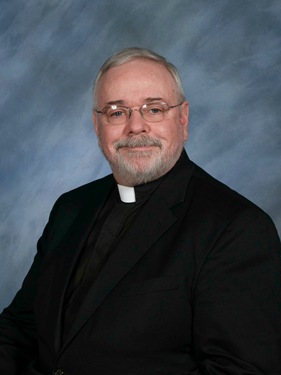
Msgr. Coyle has distinguished himself throughout his priesthood with exemplary service to Christ and His Church. His service to the Archdiocese, as a parochial vicar, pastor and member of the Cabinet and now Episcopal Vicar for the Merrimack Region, has consistently been marked by dedication and commitment. His leadership will be of great assistance as the Archdiocese moves forward with Pastoral Planning and the implementation of the New Evangelization. In this Year of Faith, we pray that the Lord continues to bless Msgr. Coyle’s ministry and enlivens in all the faithful a new enthusiasm to strengthen the mission of the Church in our parishes.
– – –
This year, Vatican Radio asked me for a Christmas greeting that I want to share with you:
On a starry night on a hillside outside of Bethlehem, choirs of angels shared the Good News of Jesus’ birth with shepherds tending their flocks. This was the first time that the message of God having come into the world in the person of Jesus was shared with anyone. Luke’s Gospel tells us that the shepherds went in haste and found Mary, Joseph and the infant. The shepherds then shared the news of that discovery with the people of the surrounding area, all of who were amazed to learn that the promise of the Messiah had been fulfilled, and went forth giving praise and glory to God.

The belief of the shepherds who heard the voices of angels, and of the people who heard the shepherds’ testimony, set into motion a sharing of faith that has endured for more than two millennia and has spread to all corners of the world. We can barely imagine how much less our lives would be if those who heard of Jesus’ birth that first Christmas night did not believe, or if they did not share the joyous news with their families, friends and communities. But the people did believe, they did share the news, and we celebrate that the Word became man and dwelt among us.
The ancient world of Bethlehem needed the faith and enthusiasm of those who would proclaim the truth of Jesus Christ, and so does our world today. In too many ways the darkness of oppression, persecution and lack of respect for human dignity threatens to overshadow us, and in too many ways the truth that each and every person is created in the image and likeness of God is denied.

The light of Christ shines through all darkness and guides us, it strengthens and sustains us in our most difficult moments, it assures us of the promise of eternal life. As the people of the Church we must share our faith with those around us, our families, friends and communities, and so let the light of Christ shine forth in our world. We must work together as brothers and sisters to dispel the darkness and to help one another to live the call to holiness. By doing so we give the greatest and most enduring gift; the gift of life in Jesus Christ.
– – –
Last Friday I visited the Missionaries of Charity in Dorchester to give my farewell to their superior, Sister Mary Ajay. She has been transferred to Washington D.C.


I said Mass and they treated me to a delicious breakfast. Sister Ajay had been previously serving in New Bedford. She did a wonderful job and will be greatly missed. We also welcomed the new superior, Sister Lizen, pronounced “Listen.” I told them that is a good name for a superior…

– – –
Sunday I celebrated Mass with the Vietnamese community. It was a very impressive celebration. They brought relics of Vietnamese martyrs and I was happy to see a number of Vietnamese priests, deacons, seminarians and religious who joined us for the Mass. It was a full church and they had a magnificent combined choir from different parishes. It was a joy to have them at the Cathedral.


– – –
That evening I visited with the friars at St. Anthony Shrine. We had vespers and dinner and spent time together.

– – –
On Christmas Eve I visited Pine Street Inn as I do each year.
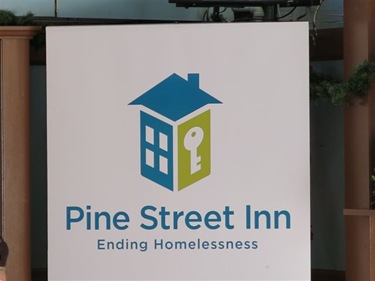
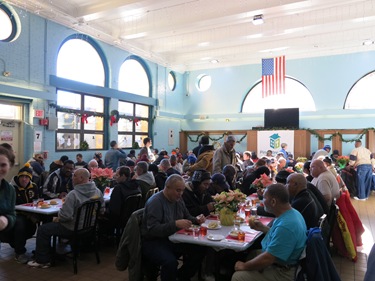
They have a special meal for the residents that day and it gives me a chance to visit and to serve them meals with the other volunteers.
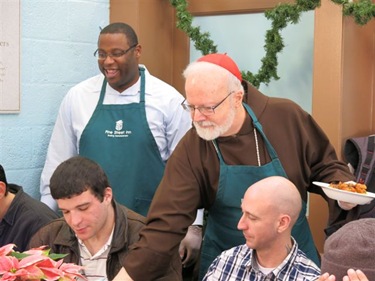
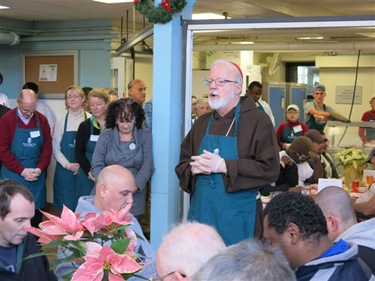
I always like to thank all the volunteers that help all year round and I take this opportunity to encourage people to do more for the homeless remembering that at Christmas time the Holy Family had no room in the inn.
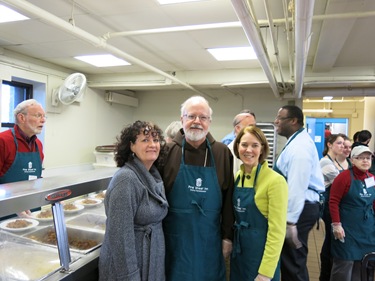
I was welcomed by Director Lyndia Downie, who is doing tremendous work at the Inn. During the visit I was accompanied by Lisa Alberghini from our Planning Office for Urban Affairs, Msgr. Frank Kelly and Father John Unni.
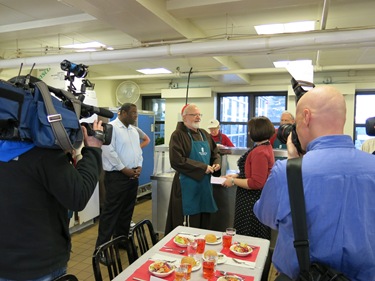
– – –
That night, I celebrated the midnight Mass at the cathedral. It was a beautiful celebration and very well attended.

The cathedral was very beautifully decorated this year and the musical program was just extraordinary.

The rector, Father Kevin O’Leary, is doing such a great job attracting people to the cathedral with the events he has there. Midnight Mass is yet another wonderful opportunity to showcase the cathedral.
Not every parish has Midnight Mass anymore but at the cathedral we have maintained that tradition and I am so happy that people have responded to it.

On Christmas day I also celebrated the 11:30 Mass.



– – –
On Christmas day several local TV channels carried the Christmas Mass I celebrated with the Daughters of St. Paul.
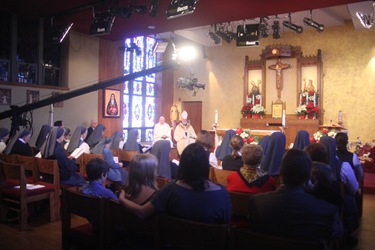
CatholicTV produced the Mass and has posted my homily on YouTube. Here it is:

– – –
Also on Christmas day we had a prayer Service at St. Francis House. I gave a short reflection, sang some Christmas carols and gave a blessing to the volunteers.
The Boston Globe had a nice story on my visit, which included this photo of one of the residents who sang a beautiful, improvised song for me.
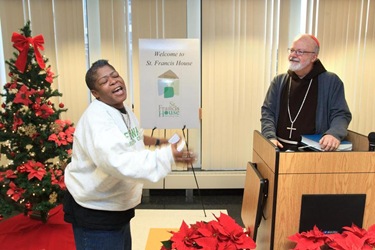
Karen LaFrazia, the executive director there does a wonderful job. During my visit I was also accompanied by Lisa Alberghini who is working both with Pine Street Inn and St. Francis House on getting permanent housing for homeless people.
On Christmas night I went to visit my family for a couple of days. I wish you all a very blessed Christmas season, and pray that you are able to enjoy the company of family and friends during this beautiful time of the year.
Until my next post.
Cardinal Seán
